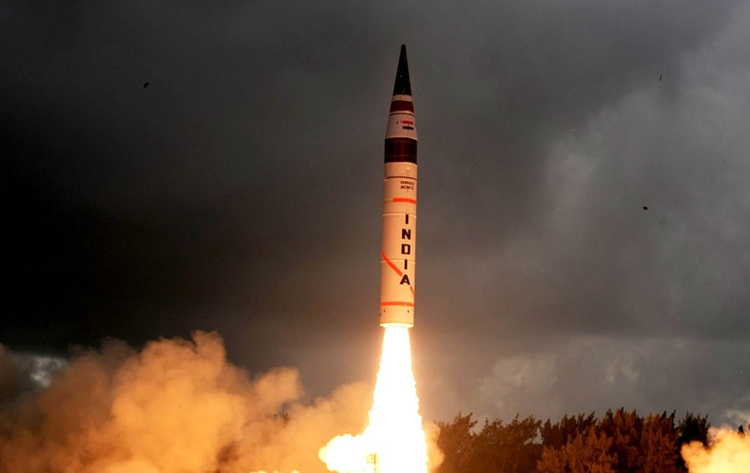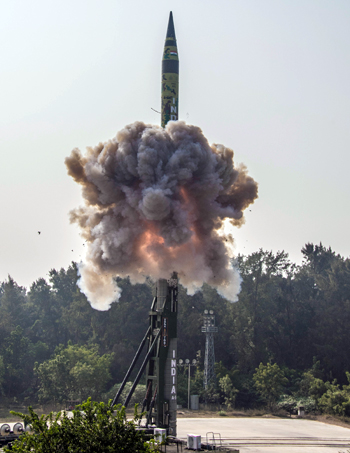INDIAN ARMED FORCES CHIEFS ON OUR RELENTLESS AND FOCUSED PUBLISHING EFFORTS

The insightful articles, inspiring narrations and analytical perspectives presented by the Editorial Team, establish an alluring connect with the reader. My compliments and best wishes to SP Guide Publications.

"Over the past 60 years, the growth of SP Guide Publications has mirrored the rising stature of Indian Navy. Its well-researched and informative magazines on Defence and Aerospace sector have served to shape an educated opinion of our military personnel, policy makers and the public alike. I wish SP's Publication team continued success, fair winds and following seas in all future endeavour!"

Since, its inception in 1964, SP Guide Publications has consistently demonstrated commitment to high-quality journalism in the aerospace and defence sectors, earning a well-deserved reputation as Asia's largest media house in this domain. I wish SP Guide Publications continued success in its pursuit of excellence.
Agni V and LRB Tested
Agni-V marks, through its use of a canister-launched missile, a shift in India's missile deployment approach as the warheads for such missiles would have to be mated before the missile is sealed into its canister. This would indicate that India would be keeping a proportion of its nuclear missiles in fully operational configuration.
 |
The Author is Former Director General of Information Systems and A Special Forces Veteran, Indian Army |

On October 27, 2021, the Strategic Forces Command (SFC) test fired an Agni-V missilefor the first time by night, which apparently marked the formal clearance for production and eventual induction of the weapon into the Indian Armed Forces. The first two launches of the Agni-V (in April 2012 and September 2013) were of the un-canisterised version. The subsequent tests (January 2015 and December 2016) were of a canisterised system mounted on a road mobile platform. In 2018, three tests of the Agni-V in January, June and December with cannister variant were tested by the SFC.
Agni-V is in line with India’s stated policy to have ‘credible minimum deterrence’ that underpins the commitment to ‘No First Use’. The missile is about 17-metre long, 2-metre wide and has launch weight of around 50 tons. It can carry a nuclear warhead of more than one ton. Officially, the Agni-V has a range "greater than 5000km". This is quite typical of DRDO's normal statement on range but even this figure places all of China within range of the Agni-V.
As a road-mobile weapon, the Agni-V is very survivable and can easily be concealed from enemy surveillance, being deployed only when ready to fire
According to Chinese analyst Du Wenlong, the range of Agni-V in could be anywhere between 7500 km and 8500 based on its Mach 24 velocity and its trajectory and other published performance parameters. The demarcation line between IRBMs and ICBMs being 5,500 km range, Agni-V is easily in the ICBM category.

The Agni-V would most probably be armed with a large-yield fusion or boosted-fission warhead with a yield of in excess of 200 kilotons, perhaps reaching 500 kilotons. As a road-mobile weapon, the Agni-V is very survivable and can easily be concealed from enemy surveillance, being deployed only when ready to fire. Its road mobility makes it much more flexible than the Agni-II and Agni-III missiles which were rail mobile and rail-launched.
The Agni-V also marks, through its use of a canister-launched missile, a shift in India's missile deployment approach as the warheads for such missiles would have to be mated before the missile is sealed into its canister. This would indicate that India would be keeping a proportion of its nuclear missiles in fully operational configuration. But this would be the need as well under the ‘No First Use’ policy considering the reaction time after absorbing the enemy nuclear attack.
With the latest test on October 27, the Strategic Forces Command(SFC) now has a arsenal of land-based ballistic missiles which include the Prithvi short range ballistic missile (SRBM), the road-mobile Agni-I medium range ballistic missile (MRBM), the rail mobile Agni-II intermediate range ballistic missile (IRBM), the rail-mobile Agni-III IRBM, the road-mobile Agni-IV IRBM and the road-mobile Agni-V inter-continental ballistic missile (ICBM).
India is among the select few countries which are developing hypersonic missiles and India has collaborated with Russia on the development of BrahMos II, a Mach 7 hypersonic cruise missile
According to a recent US Congressional Research Service (CRS) report, India is among the select few countries which are developing hypersonic missiles and India has collaborated with Russia on the development of BrahMos II, a Mach 7 hypersonic cruise missile. BrahMos II is likely scheduled to achieve initial operational capability between 2025 and 2028 as per recent inputs. India is also developing an indigenous, dual-capable hypersonic cruise missile as part of its Hypersonic Technology Demonstrator Vehicle program having successfully tested a Mach 6 scramjet in June 2019 and September 2020. Significantly, the CRS report also says that India operates approximately 12 hypersonic wind tunnels and is capable of testing speeds of up to Mach 13.
China has been aggressively developing hypersonic weapons. It currently has two lethal hypersonic missiles – the Dong Feng-17 (DF-17) and the DF-ZF Hyper Glide Vehicle (HGV). China appears to be getting ready to wage limited war on India where hypersonic weapons will have greater scope of employment especially in absence of matching anti-ballistic missile defence. On the other hand, the Agni-V is a strategic weapon for all out war, chances of which are extremely remote unless the Chinese President loses his mental balance. However, the nuclear threshold will be crossed even if China or Pakistan use tactical nuclear weapons. To that end, the deterrence value of Agni-V will remain in play.
Defence Minister Rajnath Singh congratulated the IAF and other teams associated with the LRB trial, stating that it will prove to be a force multiplier for Indian Armed Forces
Concurrently, on October 30, 2021, an Indian Air Force (IAF) team and the Defence Research and Development Organisation (DRDO) successfully flight-tested the country's first indigenously developed long-range bomb (LRB) from a Sukhoi-30MKI fighter jet over Balasore in Odisha. The exact range of the bomb was not disclosed but it is part of the class of weapons with a range of 50 to 150 km. The DRDO issued a statement saying, “The LRB, after release from the fighter, was guided to a land-based target at a long range with accuracy within specified limits. All the mission objectives were successfully met. The flight of the bomb and the performance was monitored by a number of range sensors including electro-optical tracking system, telemetry and radar deployed by the Intrgreated Test Range at Chandipur in Odisha.” Defence Minister Rajnath Singh congratulated the IAF and other teams associated with the LRB trial, stating that it will prove to be a force multiplier for Indian Armed Forces. The LRB indeed is another feather in India’s indigenisation campaign.





